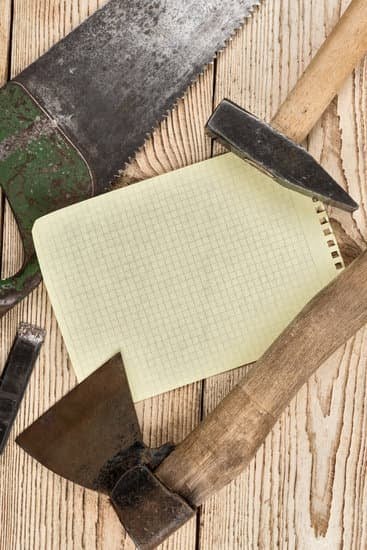Are you looking to improve the accuracy and efficiency of your woodworking projects? One way to achieve this is by creating and using templates. In this article, we will discuss how to make templates for woodworking and explore their numerous advantages.
Templates are essential tools in woodworking that can greatly enhance the quality of your projects. They serve as guides for cutting and shaping wood, ensuring that each piece is consistent and precise. Whether you are a beginner or an experienced woodworker, understanding how to create and use templates is a valuable skill that can take your craftsmanship to the next level.
By using templates, woodworkers can easily replicate complex shapes, curves, angles, and patterns with ease. This not only saves time but also reduces the margin for error, resulting in professional-looking finished products. Additionally, templates allow for greater creativity and design flexibility, as they provide a framework for experimenting with different shapes and styles without sacrificing accuracy.
In the following sections, we will delve into the different types of templates used in woodworking, the materials needed to create them, as well as a step-by-step guide on how to make them effectively. Whether you are working on furniture, cabinetry, or decorative items, learning how to make custom templates will undoubtedly elevate your woodworking skills.
Types of Templates
When it comes to woodworking, templates are essential tools that help woodworkers achieve precision and accuracy in their projects. From basic shapes to intricate patterns, templates can be used to replicate designs and create consistent pieces. In this section, we will discuss the different types of templates used in woodworking and how they can benefit your projects.
Basic Shapes
Basic shape templates are fundamental in woodworking and are often used for creating simple geometric designs such as circles, squares, triangles, and rectangles. These templates are versatile and can be employed in a wide range of projects, from making furniture to crafting small decorative items.
Curves
Creating smooth curves by hand can be challenging, which is why curve templates are an invaluable tool for woodworkers. These templates come in various sizes and radii and are perfect for adding decorative edges or creating curved components for furniture and other woodworking projects.
Angles
Angle templates are essential for accurately marking and cutting angles on wood pieces. Whether you’re working on a picture frame or constructing a chair, angle templates ensure that your cuts are precise and consistent, leading to seamless joinery and professional-looking results.
Specialty Templates
In addition to basic shapes, curves, and angles, there are also specialty templates designed for specific woodworking tasks. These may include templates for dovetail joints, lettering, inlay patterns, or other custom designs. Specialty templates cater to the unique needs of individual projects and allow woodworkers to achieve intricate details with ease.
Understanding the different types of templates available allows woodworkers to select the right tools for their specific needs. By utilizing a variety of templates in their projects, woodworkers can enhance efficiency while maintaining high standards of precision. In the following section, we will explore the materials needed to create these essential tools for woodworking.
Materials Needed
When it comes to woodworking, having the right materials and tools on hand is essential for creating accurate and efficient templates. Whether you’re a seasoned woodworker or just starting out, it’s important to have the necessary items ready before getting started. Below is a list of essential materials and tools needed to create templates for woodworking:
- Template Plastic: This durable, transparent material is perfect for creating reusable templates. It allows you to see the wood grain underneath, making it easier to align the template with the material.
- Plywood: Using plywood as a backing for your template can provide stability and support while cutting around the edges. Opt for a smooth plywood surface to ensure clean lines and precise shapes.
- Pencil and Ruler: These basic tools are essential for measuring and tracing your desired template shape onto the template plastic or plywood. A sharp pencil and accurate ruler will help ensure that your measurements are precise.
- X-Acto Knife or Jigsaw: Depending on the complexity of your template design, you may need either an X-Acto knife or a jigsaw to cut out your template shape from the template plastic or plywood. Both tools offer precision cutting capabilities.
- Sandpaper: After cutting out your template shape, sandpaper will be necessary to refine the edges and smooth out any rough areas. This step is crucial for creating a flawless template.
Now that you have an idea of what materials and tools are required, it’s time to gather everything you need before embarking on your woodworking project. With these items in hand, you’ll be well-equipped to create professional-grade templates that will enhance your woodworking endeavors.
Remember that using high-quality materials and taking precision measurements are vital when making templates for woodworking projects. By investing in top-notch supplies and employing careful attention to detail, you can produce templates that will serve as valuable assets in your craft for years to come.
Step-by-Step Guide
Creating templates for woodworking projects can greatly improve accuracy and efficiency in your work. Whether you’re working on basic shapes, curves, angles, or more intricate designs, having a template on hand can make the process smoother and more precise. Here’s a step-by-step guide on how to make templates for woodworking, including measuring and tracing, cutting, and refining the template:
- Measure and Trace: The first step in making a woodworking template is to measure the dimensions of the shape or design you want to replicate. Use a ruler to ensure accurate measurements, then trace the outline onto template plastic or plywood using a pencil.
- Cutting: Once you have traced the design onto the material, carefully cut along the outline using a jigsaw, bandsaw, or coping saw. Take your time to maintain the shape and smoothness of the edges.
- Refining the Template: After cutting out the rough shape of your template, use sandpaper or a router with a flush-trim bit to refine and smoothen the edges. This will ensure that your template produces clean and accurate results when used in woodworking projects.
Using these steps as a guide, you can create templates for various woodworking needs, from simple shapes to more complex patterns. Remember to take your time and pay attention to detail throughout the process.
Creating templates for woodworking doesn’t have to be complicated. By following this step-by-step guide, you can produce templates that will help streamline your woodworking projects and enhance their precision. With careful measuring and tracing, precise cutting techniques, and meticulous refinement of the template’s edges, you’ll be well on your way to creating custom templates tailored to your specific woodworking needs.
Utilizing these techniques will not only save time but also ensure consistent results in future projects. Now that you have mastered how to make templates for woodworking, you can apply these skills to various projects and designs while maintaining uniformity throughout your work.
Tips and Tricks
When it comes to woodworking, creating templates can be a game-changer in terms of accuracy and efficiency. But knowing how to make templates for woodworking involves more than just cutting out a shape from a piece of material. There are tips and tricks that can take your template-making skills to the next level.
One expert tip for creating templates is to use double-sided tape. This can be incredibly helpful when transferring the template shape onto the actual wood you’ll be working with. By securing the template in place with double-sided tape, you can ensure that it won’t shift or move while you trace or cut around it, resulting in a more precise and accurate piece.
Another valuable trick is to sand the edges of your template. Smoothing out the edges after cutting your template shape can prevent any rough or jagged edges from transferring onto your wood pieces. It’s a simple step that can make a big difference in the overall quality of your woodworking project.
Creating reusable templates is also an excellent strategy for saving time and materials. By using durable materials like template plastic or even thin sheets of metal, you can create templates that will last through multiple uses without losing their shape or accuracy.
These tips and tricks are just a few examples of how paying attention to detail in creating templates for woodworking can lead to better results in your projects. Experimenting with different techniques and finding what works best for you will ultimately improve your skills and craftsmanship.
| Tips | Details |
|---|---|
| Double-Sided Tape | Secure the template in place while tracing or cutting |
| Sanding Edges | Smooth out edges to prevent rough transfer onto wood pieces |
| Reusable Templates | Create durable templates for multiple uses |
Template Applications
Templates play a crucial role in woodworking projects, offering woodworkers a way to achieve accuracy and consistency in their designs. Whether it’s for creating identical pieces or designing intricate patterns, templates can streamline the woodworking process and produce high-quality results. In this section, we will explore the different applications of templates in woodworking and how they can be utilized to enhance various projects.
Creating Identical Pieces
One of the most common uses of templates in woodworking is for creating identical pieces. Whether it’s for crafting multiple chair legs or drawer fronts, templates allow woodworkers to replicate a design flawlessly. By tracing the template onto the wood and then cutting along the traced lines, woodworkers can ensure that each piece is an exact match, resulting in uniformity and consistency throughout the project.
Designing Intricate Patterns
Templates also lend themselves well to designing intricate patterns in woodworking. From ornate carvings to decorative inlays, templates provide a precise outline for complex designs. Woodworkers can use templates to trace and cut out detailed shapes or motifs, allowing them to incorporate elaborate patterns into their creations with accuracy and ease.
Routing and Shaping
Additionally, templates are valuable for routing and shaping tasks in woodworking. Whether it’s creating specific curves, angles, or edges on a piece of wood, templates can guide routing and shaping tools to achieve the desired outcome. This is particularly useful for creating decorative edges on tabletops, molding profiles, or trim pieces with precision.
By understanding the diverse applications of templates in woodworking projects, woodworkers can leverage these tools to improve efficiency and craftsmanship while expanding their creative possibilities.
Template Care and Maintenance
Properly caring for and maintaining templates is crucial to ensure their longevity and accuracy in woodworking projects. Over time, templates can become worn or damaged if not handled and stored correctly. Here are some important tips for template care and maintenance:
First, it’s essential to store templates in a safe and secure location to prevent any damage. Templates made from materials like template plastic or thin plywood should be stored flat to maintain their shape and prevent warping. Additionally, storing templates in a protective sleeve or folder can help prevent scratches and dents.
Regular cleaning is also important for template care. Dust and debris can accumulate on templates, affecting the accuracy of your woodworking projects. Use a soft, dry cloth to gently wipe down the surface of the templates after each use. For stubborn residue, a mild soap and water solution can be used, followed by thorough drying.
Furthermore, if your templates have intricate or sharp edges, it’s crucial to handle them with care to avoid any accidental cuts or injuries. When not in use, consider wrapping the edges of the template with protective material such as foam or bubble wrap. This will not only protect the template but also prevent any potential injuries during handling and storage.
In addition to these tips, periodically inspecting your templates for signs of wear or damage is important. If you notice any cracks, chips, or warping, it may be time to repair or replace the template to maintain the accuracy of your woodworking projects.
Overall, proper care and maintenance of templates are essential for ensuring their longevity and accuracy in woodworking projects. By following these tips, woodworkers can preserve their templates for years to come while consistently achieving precise results in their creations.
| Template Care Tips | Importance |
|---|---|
| Store flat in a protective sleeve | Prevents warping and scratches |
| Regular cleaning with a soft cloth | Prevents dust buildup affecting accuracy |
| Handle with care; wrap sharp edges when storing | Prevents potential injuries during handling |
| Inspect periodically for signs of wear or damage | Maintains accuracy in woodworking projects |
Conclusion
In conclusion, templates are invaluable tools in woodworking, offering a simple yet effective way to improve accuracy and efficiency in any project. From basic shapes to intricate patterns, templates can be used for a wide range of applications, making them essential for both beginner and experienced woodworkers. By following the step-by-step guide and utilizing the tips and tricks provided, anyone can learn how to make templates for woodworking with ease.
It is important to remember that the materials needed to create templates are relatively inexpensive and readily available, making it accessible for woodworkers of all levels. Additionally, by properly caring for and maintaining templates, woodworkers can ensure their longevity and accuracy, allowing them to be reused time and time again.
Overall, creating templates for woodworking projects is a skill worth mastering. By taking the time to learn this valuable technique, woodworkers can streamline their processes, increase precision in their work, and ultimately enhance the quality of their final products. So why not give it a try? Challenge yourself to make your own templates for your next woodworking project and experience firsthand the difference they can make.
Frequently Asked Questions
What Is the Best Material to Make Woodworking Templates?
The best material to make woodworking templates is typically thin plywood or MDF board. These materials are sturdy and easy to work with when creating intricate template shapes for woodworking projects.
What Can I Make Woodworking Templates Out Of?
Woodworking templates can be made out of a variety of materials, including cardboard, plastic, or even metal. However, the most commonly used materials are thin plywood or MDF board due to their durability and ease of cutting and shaping.
What Material Is Used to Make Templates?
Templates for woodworking can be made from a range of materials such as wood, plastic, metal, or even paper. The choice of material often depends on the complexity of the project and the level of detail required in the template design.

Hi everyone! I’m a woodworker and blogger, and this is my woodworking blog. In my blog, I share tips and tricks for woodworkers of all skill levels, as well as project ideas that you can try yourself.





